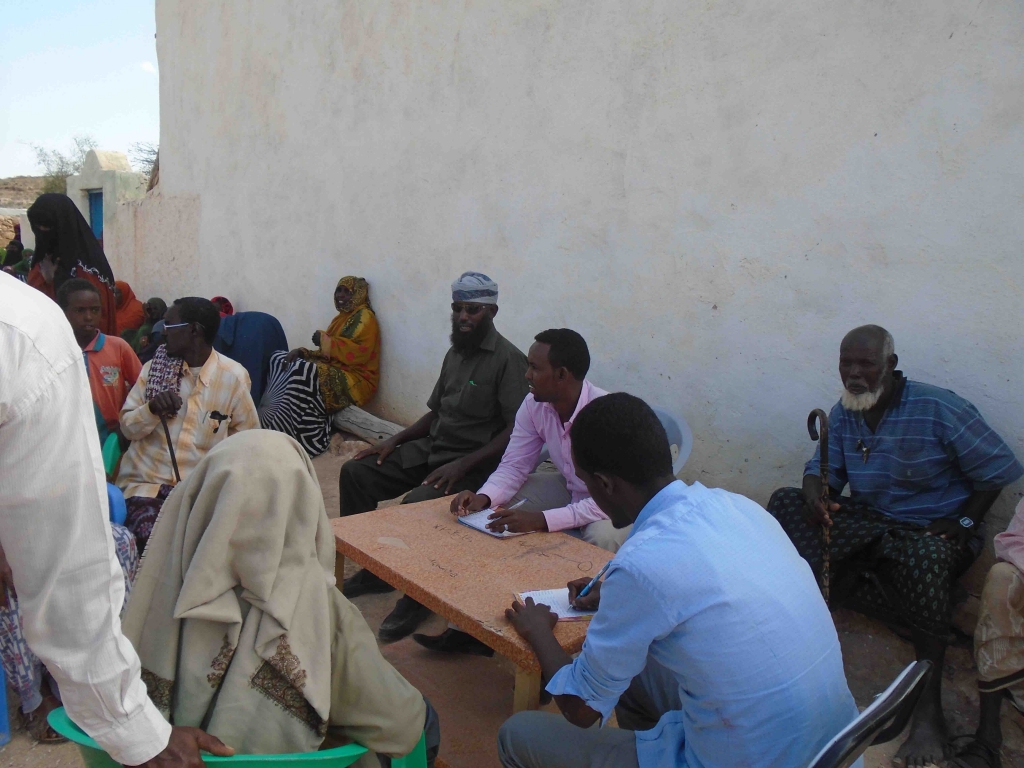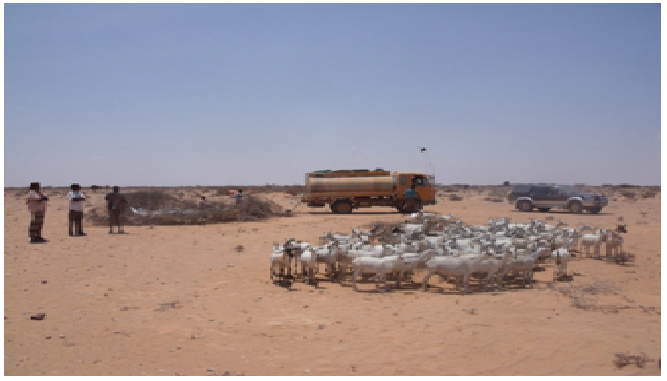Introduction
We as a team from TSS left Bosaso on 2nd April 2016 and headed to Dhadaar and unuun villages located in Qandala District Bari region, and our main aim was to select new beneficiaries to benefit from food for work from WFP, the journey from Bosaso to those villages was lengthy and it took us 24hours but we finally reached at our destination. We started our work from Dhadaar village and we managed to register 429 beneficiaries who were our target group within this village, at Dhadaar village our work load took us 2 weeks to get done, and afterwards we proceeded to Unuun village where we also registered 429 beneficiaries making up a total of 858 beneficiaries from these two villages.
Objectives of registration
- To get potential beneficiaries who are capable of working with different age groups and gender both male and female.
- To increase income levels through employment opportunities for 858 unemployed persons in the community during the project period
- To improve on the food security issue of the vulnerable people within the villages of dhadaar and unuun and encourage the people living in these communities to take part and participate in livelihood programs.
- To improve on the livelihood conditions of the target beneficiaries and stabilize the food insecurity during and after the project implementation in areas of Dhadaar and unuun
- To establish the number of vulnerable people within these communities of Dhadaar and Unuun communities.
Community mobilization.
The key to successful mobilization efforts is making sure that communities are in the driver’s seat during the process, during community mobilizing we brought all stockholders together and had a long discussion both communities in dhadaar and unuun they tabled all of their issues,
Selection criteria
The selection criteria of the beneficiaries was done on the general assessment of living standards as this was directly aimed at identifying the most vulnerable persons in these communities, these vulnerable persons were identified by the local leaders of those communities and they were endorsed for registration, the community leaders took time to look at those people who had no livestock and farms to carry out agricultural activities, those with no permanent work, no food held, not even owning any petty business, single parents who can work, widows, orphans, the internally displaced people in those areas because of the natural vagaries especially drought, in their original areas, and lack of food and water for survival to mention but a few, all the above groups of people are vulnerable and were presented as the most suitable members of the community to benefit in this program and that was the criteria we used to select the beneficiaries.
Having completed the selection process, we explained to them the aims and objectives of the of the program, By informing them that this allows the community to solve its own problems through its own efforts which is the key to having good living standards which leads to sustained developmental outcomes within a community.
Outcome of the selection process
- We managed to select 858 beneficiaries from the local community who will receive assorted food commodities in the project period.
- We as a team from TSS managed to engage all parties of the community through our mobilization skills to participate the in the selection process and were excited with the registration especially targeted beneficiaries.
- Through collective engagement and participation in the community discussion we agreed to rehabilitate two check dams in Dhadaar and Unuun.
- We were able to come up with a new selection list of vulnerable community members which will act as stepping stone to create job opportunities for about 858 project workers directly or indirectly who will earn monthly rations depending on calculation of the amount of work they put in the project activities.
Challenges
- The community expectations were higher than the number of beneficiaries selected and registered and it sparked off serious arguments.
- The impact of very scorching sunshine and drought conditions did not allow us ample time to have enough contact with the communities to get all the vulnerable members since some of them had fled to other villages in search for safer areas with water sources.
- The distance was also a big challenge for us because from Bosaso we had to drive 24hour journey nonstop to reach these remote villages of which there are poor roads and loose surface which proved to be a challenge to us.











